The winter irruption of Common Redpolls has been a welcomed surprise this year and these pretty little birds that often travel in nomadic flocks of a hundred or more have provided many great images for the photographer who has gone looking for them. They are also common in back yards that have maintained nyger seed feeders over the winter, so if you’ve been one of those fortunate people the Redpolls have come to you! Although I’ve already dedicated a blog post to the Redpolls, here are two more images that will most likely be the last until next winter.
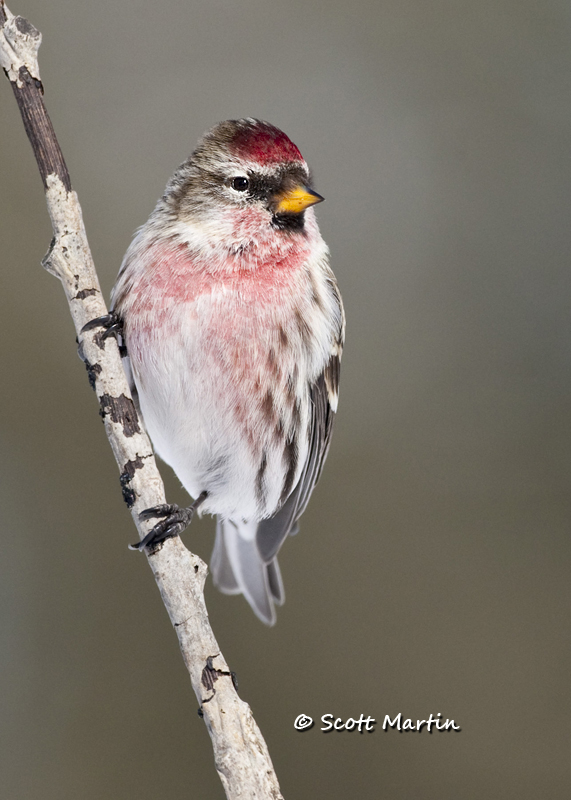
.
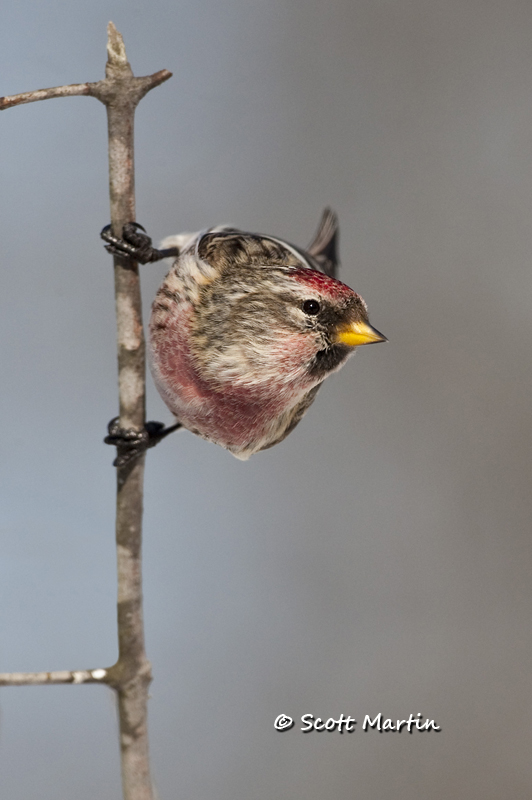
Both of the above images are of male Common Redpolls which differ from the females by their red coloured breast feathers.
The following images are from last summer however I’m just getting around to adding them to the website galleries. The first image is of a Brown Thrasher, which is a common bird that frequents thick bushes and spends much of its time on the ground (as in this image). They are a fairly skittish bird and don’t often provide great photo opportunities! The Brown Thrasher is a large bird measuring up to 30cm in length and lays its eggs in shallow nests on, or very close to the ground. This is a problem as they are prone to predation from snakes, skunks, weasels and other similar threats. The Brown Thrasher is a staunch defender of its nest and has been known to draw blood from anything, including unsuspecting birders and photographers who stray too close to an occupied nest. Perhaps what the Brown Thrasher is best known for is its wonderful and complex song. The Thrasher has the most extensive and varied vocal repertoire of any North American bird with an estimated 3,000 unique sounds they combine to form a multitude of songs and calls. In these parts of Ontario they are often heard and less frequently seen in the spring and summer months.
Click the link to hear the Brown Thrasher Call, from the Cornell Lab of Ornithology.
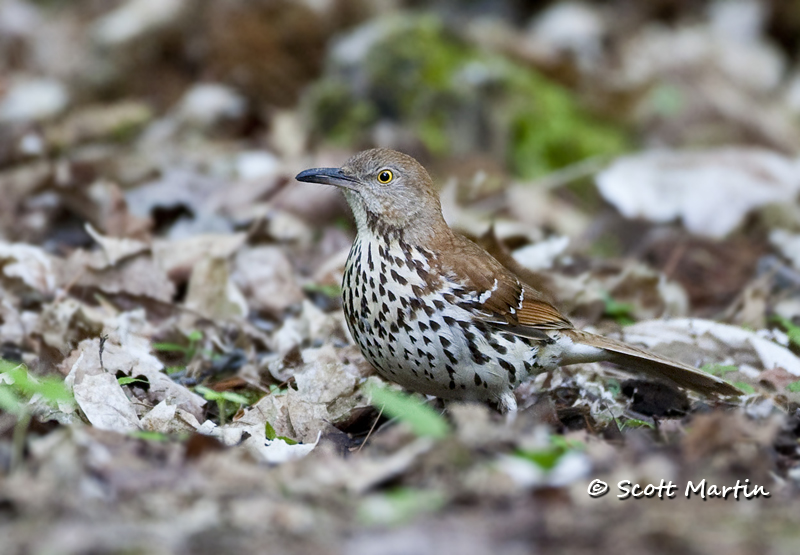
The last two images are of a Wood Thrush. Like the Brown Thrasher, Wood Thrushes prefer dense thickets and old world pine forests, such as Thickson’s Woods in Oshawa, where these images were shot. The Wood Thrush is smaller than the Thrasher, measuring about 20cm in length. Urbanization has caused the population of Wood Thrushes to be on the decline in Ontario and their reduced habitat has been largely taken over by a more common thrush, the American Robin. Like the Thrashers, Wood Thrushes have a beautiful song, which Henry David Thoreau described as the most beautiful of avian sounds.
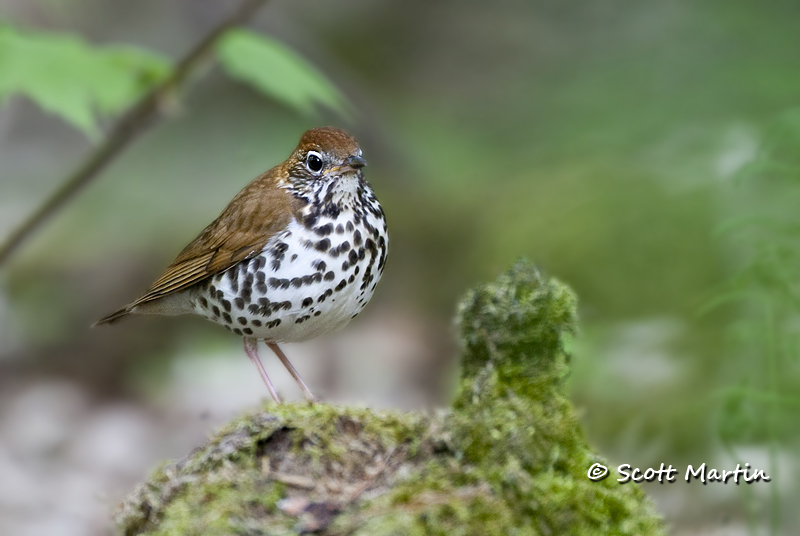
.
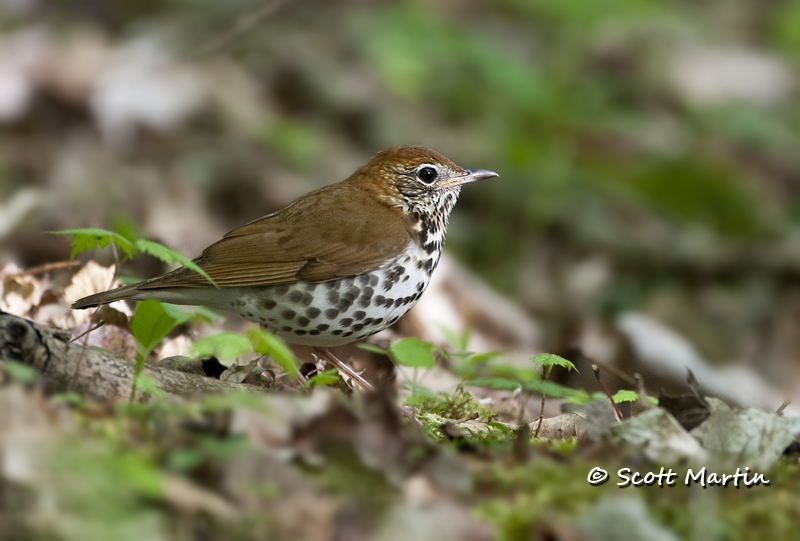

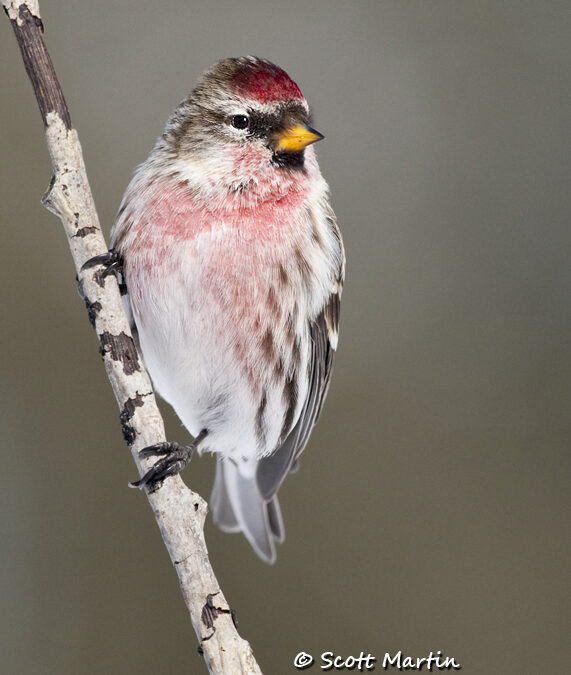
The second Redpoll image is very unique and quite an unusual pose. Nice work!
The summer birds have me longing for spring! You are fortunate to have captured both of these fine specimens, they are skittish for sure and my images of these birds are not suitable for public consumption.
Thanks Arni and now that March is here we wont be waiting too much longer before the spring birds start returning.